Piccalilli
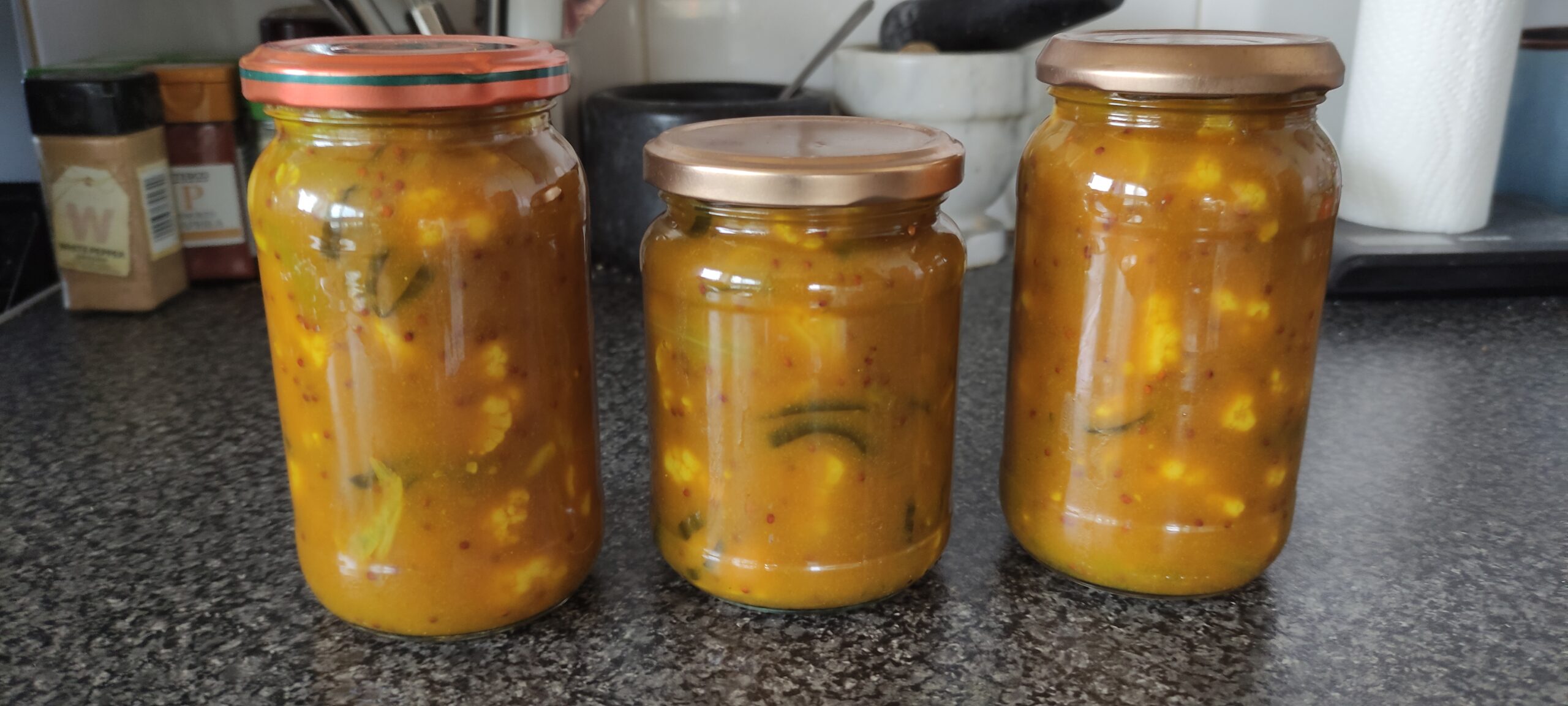
My grandmother, who we lived with when I was a child, used to make her own preserves, including piccalilli, from the produce my grandfather grew in the vegetable patch in our backyard. Sadly she didn't live long enough to pass down her recipes to me, but over the years I've developed my own. In this recipe, which I've been working on for the past 12 years, the vegetables retain a crunch to them that is perfect for an autumnal ploughman's lunch.
The vegetables you use should be as fresh as possible; this is not a way to use up tired, old veg. Cauliflower, cucumber, and onions are essential, but you can add your choice of others if you wish: peppers, tomatoes (even green tomatoes), beans, courgettes, and broccoli are all good candidates. In this case I've chosen some beans. As a rough guide, my 800g is made up of 3/4 of the florets on a small cauliflower (you could use the rest - including the core and the intact outer leaves - for a cream of cauliflower soup...is a basic cream soup a recipe I should be posting, I wonder?), a sliced cucumber, 1/2 a sliced onion, and a small handful of beans, all cut fairly small. Vary the proportions to what you yourself would prefer.
If you really want your piccalilli to look like the supermarket stuff, use white (distilled malt) vinegar. If you don't like the idea of your vegetables being quite so al dente, simply cook them longer. This recipe makes a sweet piccalilli; you can use less sugar if you prefer.
Unlike chutneys, piccalilli doesn't keep indefinitely, despite the hot bottling. Aim to use it within six months.
Makes 3 standard jars. Store any open jars in the fridge.
Ingredients
800g assorted, prepped vegetables
2 1/2 teaspoons salt
1 pint (568ml) malt vinegar plus an extra 100ml
1 1/2 inch thumb of root ginger, peeled
7 teaspoons plain flour
3 teaspoons mustard powder
2 teaspoons turmeric powder
a pinch of cayenne pepper or chilli powder
1/2 cup (just) of white sugar
3 teaspoons of prepared wholegrain mustard
A guide to sterilizing jars:
Method
1.
Prepare your vegetables. Rub in the salt, cover, and set aside at room temperature for 24 hours.
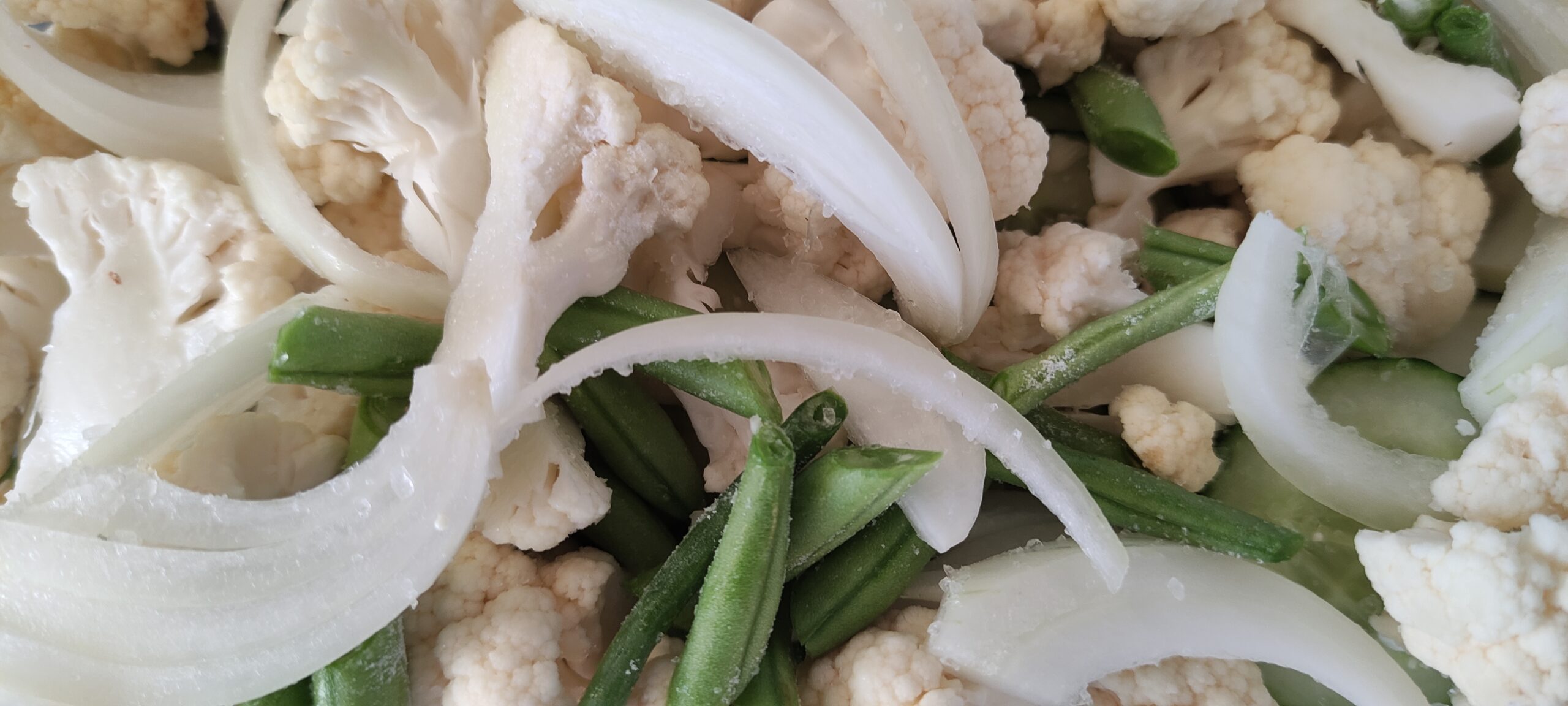
2.
At the same time, you can also get ahead of yourself by infusing the vinegar. Peel and bash the root ginger, pop it in a pan with the pint of vinegar, and bring it to the boil. Transfer the lot to a suitable container, cover, and leave at room temperature to infuse.
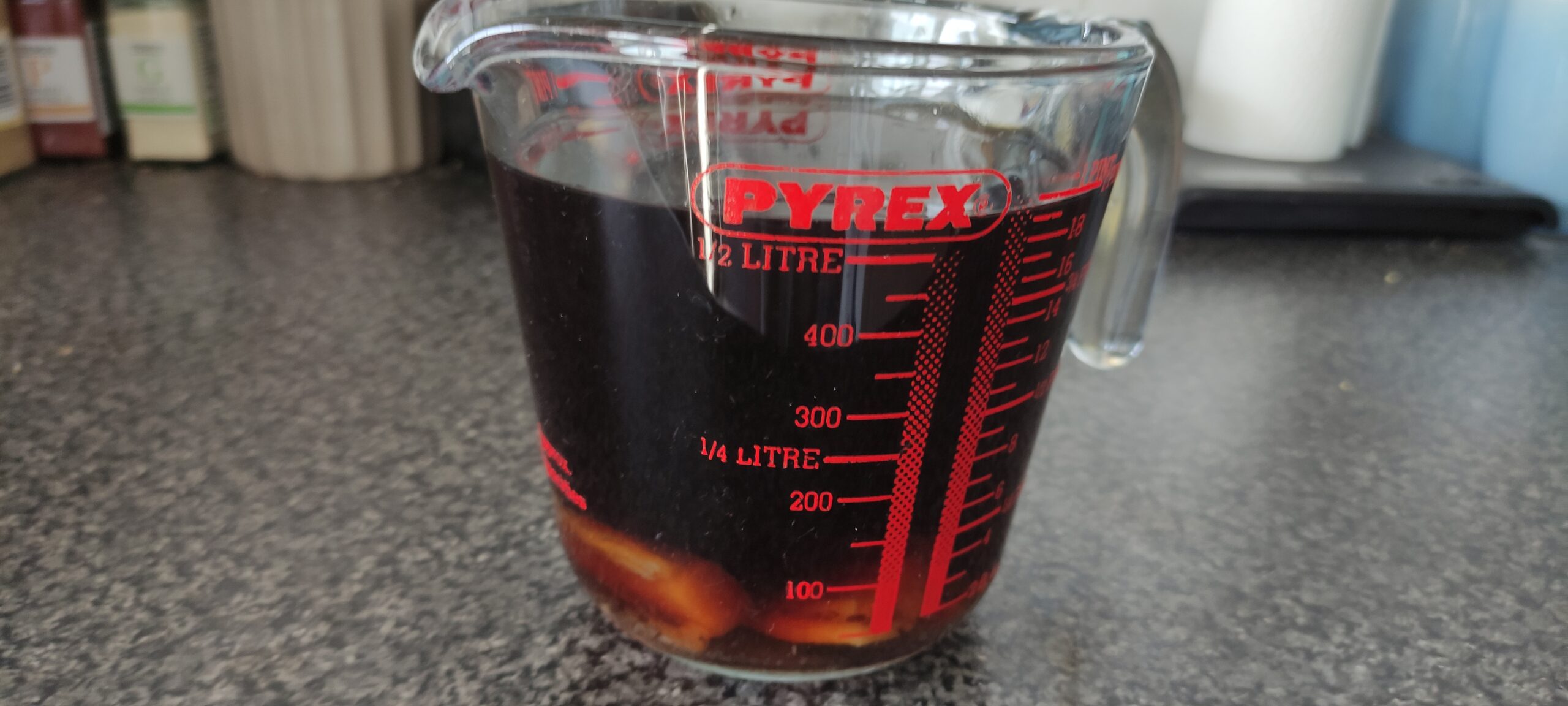
3.
The next day tip the salted vegetables into a colander and set it to drain for an hour or so to get rid of all brine. Do not rinse them! If they're well drained, they provide the perfect amount of salt for this recipe.
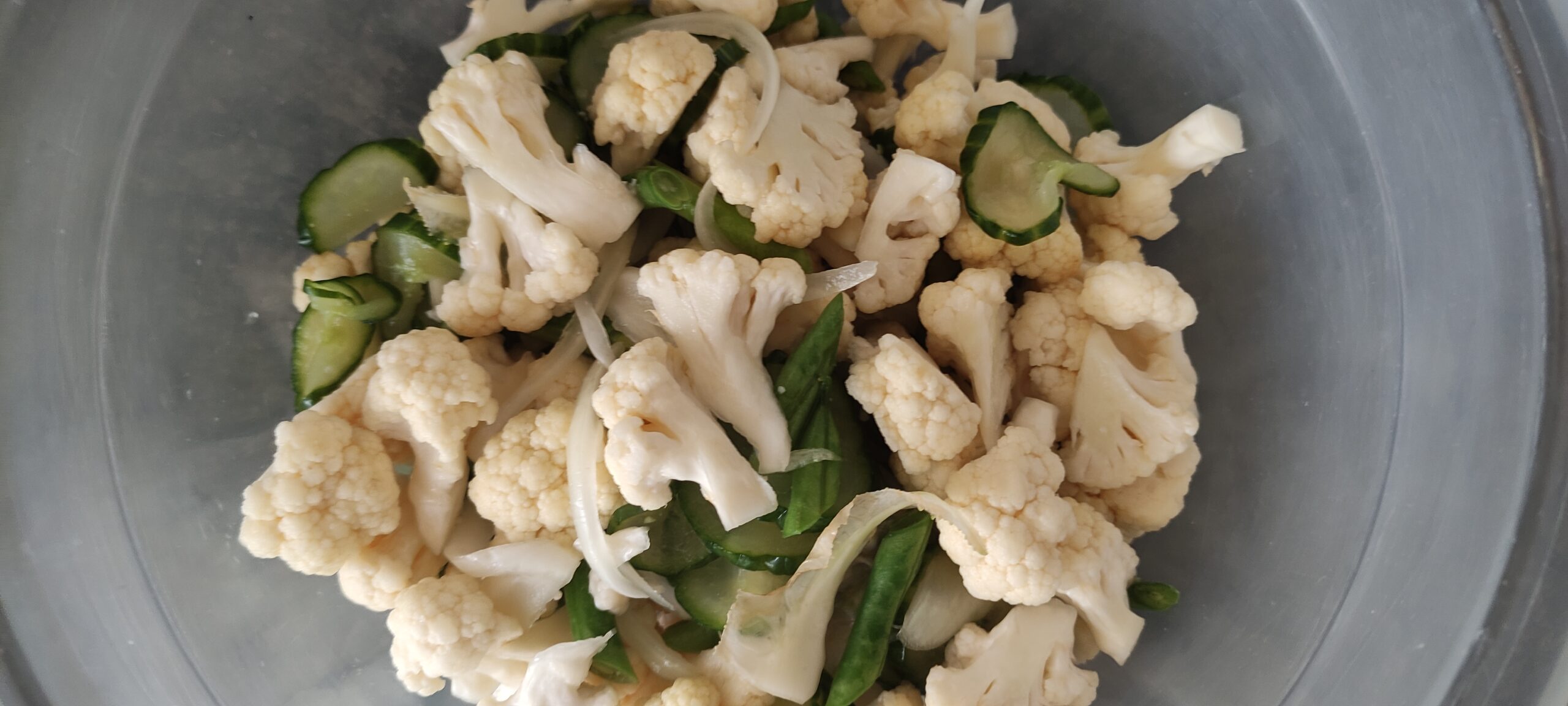
4.
It's time to sterilize your jars. I always add a couple of extra ones, in case there's any leftover preserves.
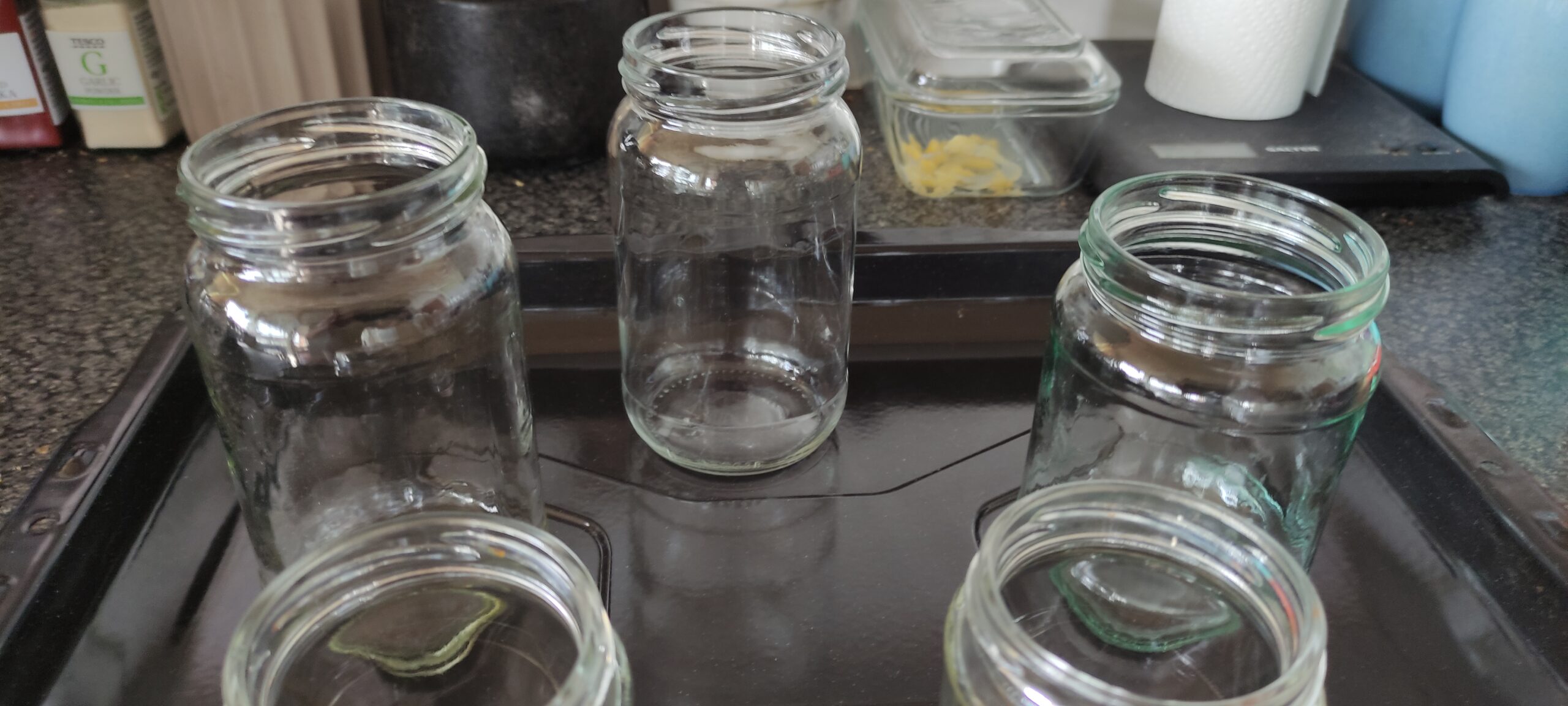
5.
Sift the flour and the dry spices, then thoroughly stir in the sugar. This is very important as it helps to break up small lumps of flour - you don't want a lumpy sauce! Finally stir in the remaining 100ml of vinegar and the 3 teaspoons of wholegrain mustard, again checking for any lumps that may have formed.
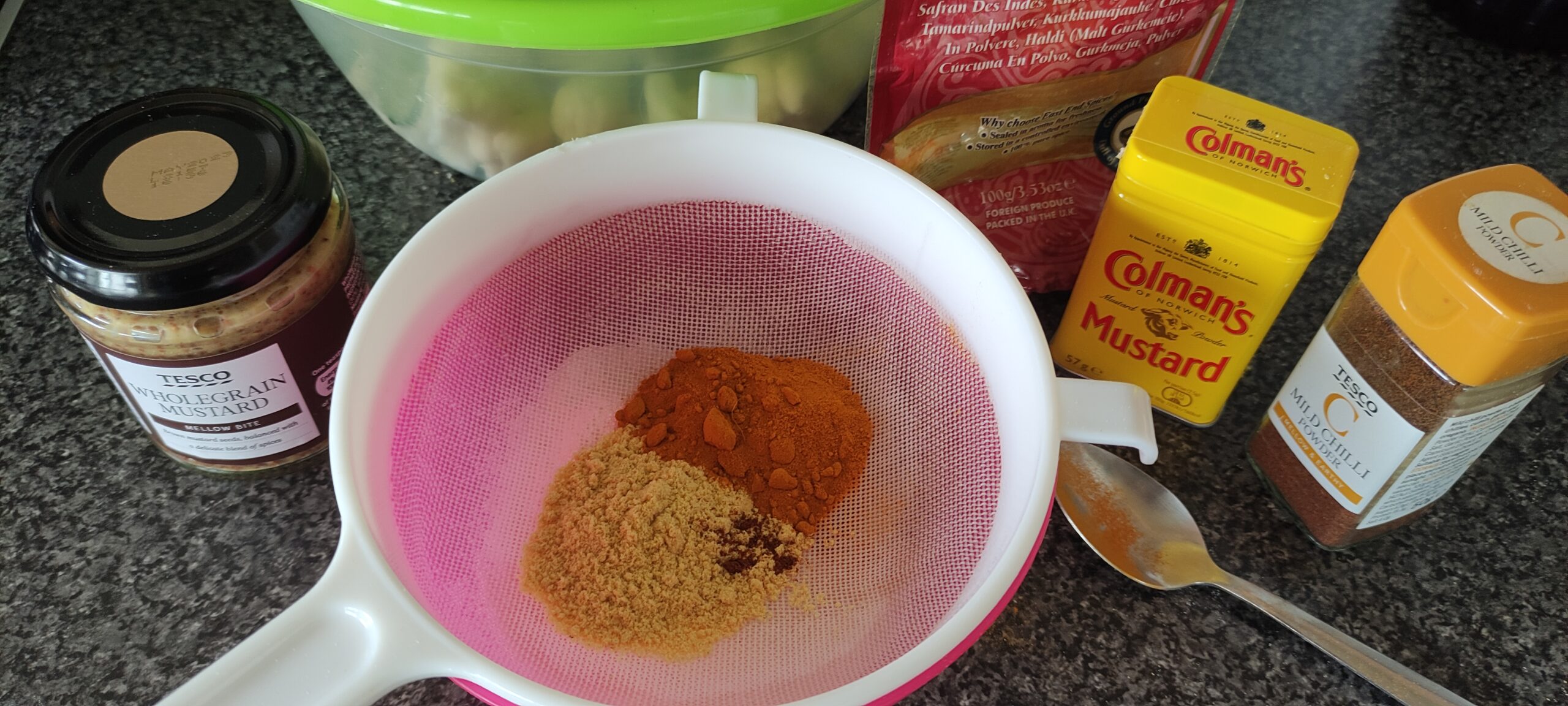
6.
Strain the infused vinegar into a large pan and discard the ginger. Add the slaked spiced flour mix, stir well to incorporate it and bring the lot to a boil, stirring all the while. Cook on the boil for 5 minutes. Be warned: turmeric can indelibly stain almost anything it comes into contact with!
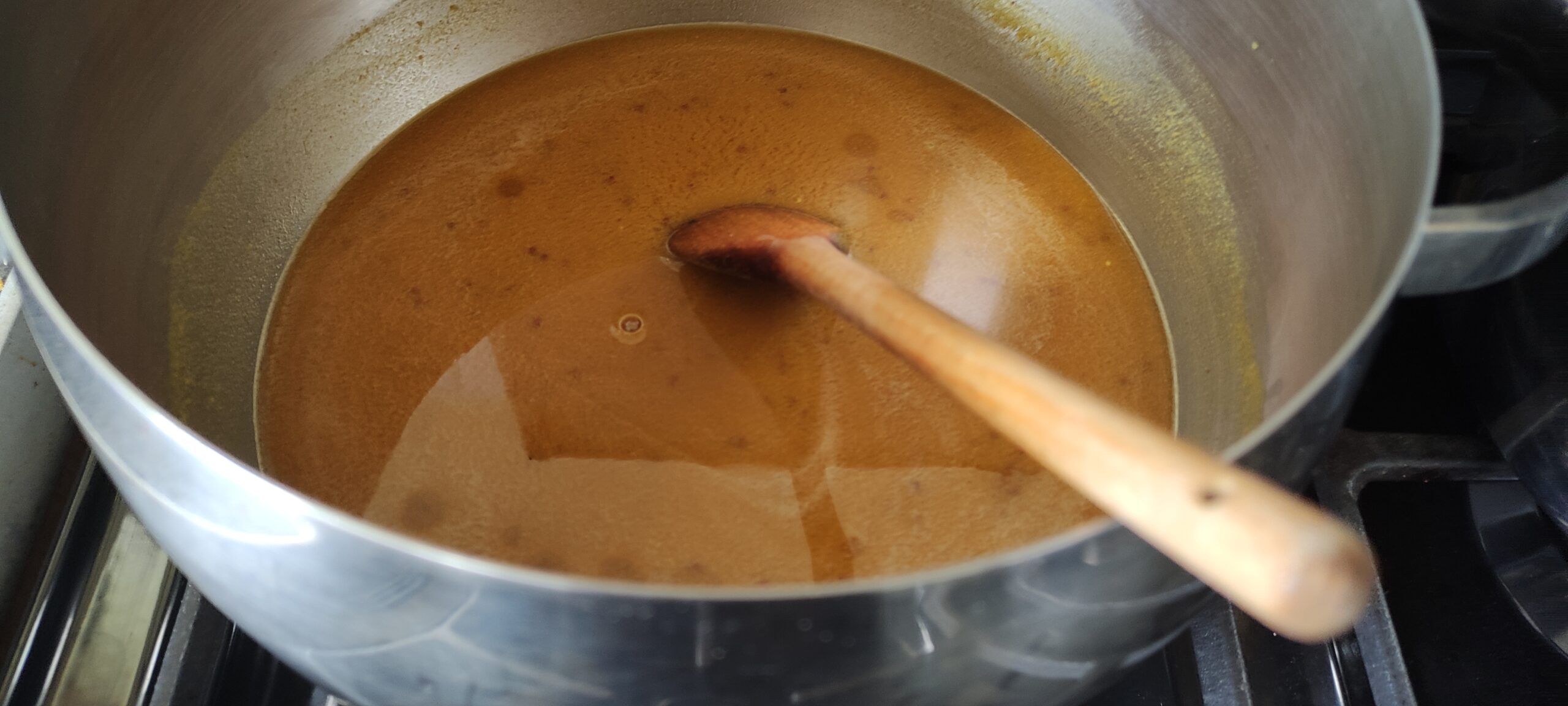
7.
Carefully add your vegetables, bring back to a rolling boil and cook for a further 10 minutes (for al dente veg), or longer if you prefer your vegetables softer (or you are using vegetables - like my beans - that take longer to cook). If you are sceptical about these timings, be aware that vegetables take longer to soften in a boiling sauce than they do in plain boiling water.
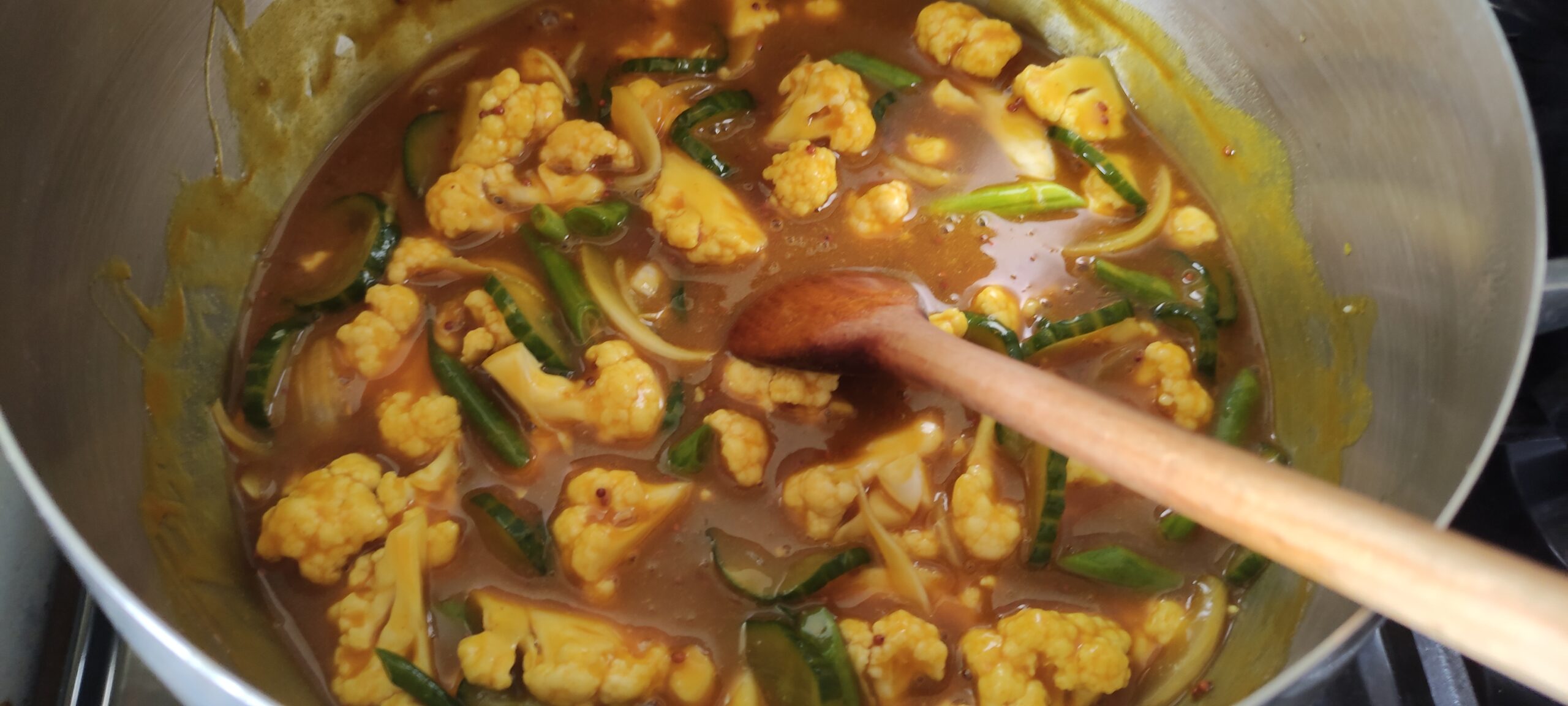
8.
Whip the roasting dish out of the oven and ladle the hot piccalilli into the hot jars. Take great care - both can give you nasty burns! Drain the boiled lids and let them air dry before screwing the onto the jars. Don't be alarmed when you hear them pop over the next hour: it's just the seals reasserting themselves. Use any jars that don't reassert their seals first.
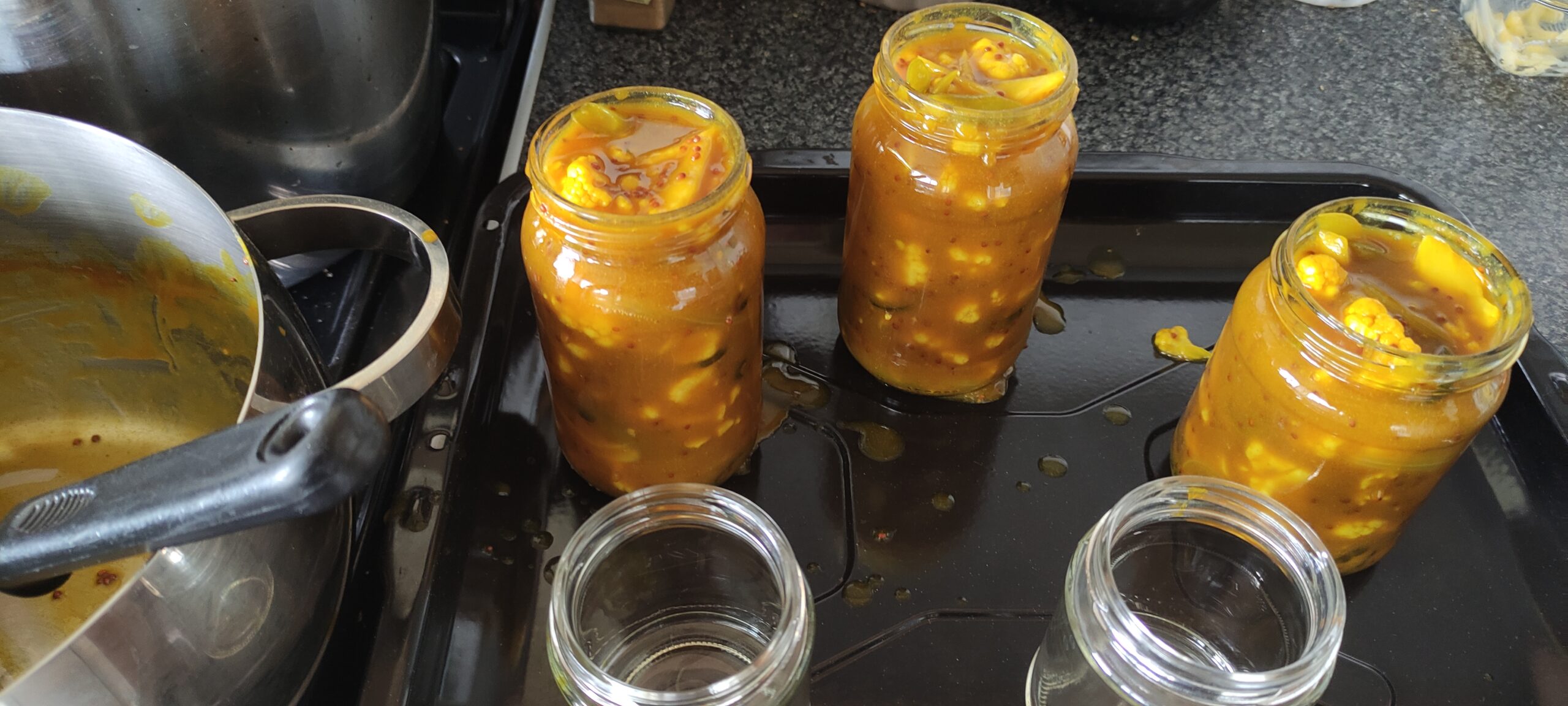
9.
Wash the outside of the jars once they're cold. Store for a week or two before opening, if you can, to allow the flavours to mellow. Seriously good with cheddar or corned beef - though the residents of this estate have been known to spoon it straight into their mouths from the jar!

Any questions? You can use the comments form at the bottom of the page.
Did you know?
You'll find recipes at the back of all the books in the Send for Octavius Guy series: